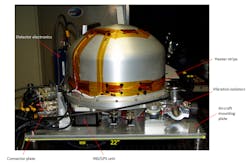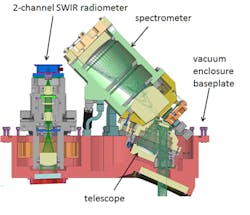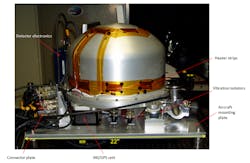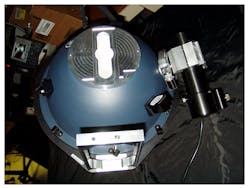Tempus Applied Solutions modifying Gulfstream IV bizjet with NASA JPL remote imaging spectrometer
WILLIAMSBURG, Va., 6 April 2016. Engineers at Tempus Applied Solutions in Brunswick, Maine, are designing, engineering, modifying, and seeking FAA certification of a Gulfstream IV twinjet aircraft integrated with a portable remote imaging spectrometer (PRISM) under a contract with NASA's Jet Propulsion Laboratory (JPL) in California.
The aircraft modification contract with JPL, a federally funded NASA field center for research and development located in La Cañada Flintridge and Pasadena, Calif., calls for Tempus engineers to outfit a Gulfstream IV jet, designed for private and business use, with a specialized hyperspectral sensor developed by NASA and JPL scientists. The sensor-equipped business jet (bizjet) will be used to survey the condition of the coral reef systems around the world as part of a NASA field expedition.
Modifications of the Gulfstream IV bizjet began this month (April 2016) at Tempus' Brunswick, Maine, facility -- an 84,000 square-foot facility uniquely designed to enable Tempus to perform the required modifications, including airframe structure, interior design, electrical changes, primary and secondary controls, and avionics. Modifications are scheduled to be completed in May 2016.
The Tempus engineering support team, based in Williamsburg, Va., will provide more than 5,000 hours of engineering support for the modification project. Tempus has applied for an FAA Supplemental Type Certificate (STC) for this modification; Tempus officials expect to receive the certification approval and intellectual property rights later this year.
After completion of the modifications, Tempus will fly the aircraft several hundred hours annually in a variety of locations around the world in support of the sensor operations and data collection efforts of NASA and JPL. The first flight is scheduled to depart in early June 2016 to the Pacific region with a scientist team onboard after the aircraft completes its post modification tests during the last week of May. The aircraft's first mission will last approximately three weeks depending on weather, which can affect the timeliness of the data collection process.
"Tempus is looking forward to working with JPL and NASA on this mission," says Tempus CEO Scott Terry. "This is a great opportunity to participate in a project that will provide critical environmental insight related to the condition of our world's oceans, and we hope to continue partnering with NASA on similar projects in the future."
PRISM control electronics, separated here into an operator rack and a control rack. An Uninterruptible Power Supply (not shown) provides power between hangar and aircraft power during take-off and landing.
Tempus Applied Solutions Holdings Inc. (OTC:TMPS), with headquarters in Williamsburg, Virginia, provides design, engineering, systems integration, and flight operations solutions that support critical aviation mission requirements for a variety of customers, including the United States Department of Defense, other U.S. government agencies, foreign governments, and select corporations and individuals in the private sector.
You might also like:
Subscribe today to receive all the latest aerospace technology and engineering news, delivered directly to your e-mail inbox twice a week (Tuesdays and Thursdays). Sign upfor your free subscription to the Intelligent Inbox e-newsletter at http://www.intelligent-aerospace.com/subscribe.html.
Connect with Intelligent Aerospace on social media: Twitter (@IntelligentAero), LinkedIn,Google+, and Instagram.
Intelligent Aerospace
Global Aerospace Technology NetworkIntelligent Aerospace, the global aerospace technology network, reports on the latest tools, technologies, and trends of vital importance to aerospace professionals involved in air traffic control, airport operations, satellites and space, and commercial and military avionics on fixed-wing, rotor-wing, and unmanned aircraft throughout the world.





